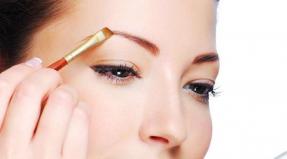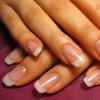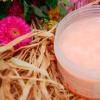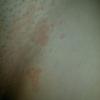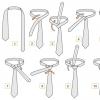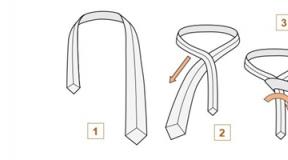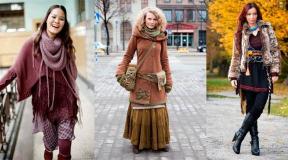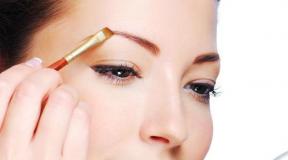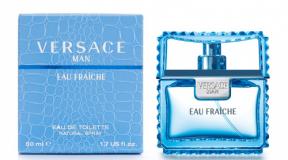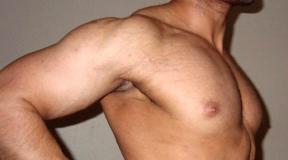How to iron clothes without an iron. Ironing clothes without an iron - useful tips Ironing pants without an iron
Modern housewives are so spoiled by the availability of technology that they are unlikely to immediately be able to find the answer to the question of how to iron things without an iron. But what to do if the device fails, and you have an important event coming up and you urgently need to prepare things for it? Don’t panic, because there are at least a dozen ironing methods without an iron. We will talk about them in our article.
Steam smoothing
The first thing that comes to mind when you need to iron things without an iron is to use steam. This option is not new and is quite in demand among housewives in cases where the ironing machine suddenly fails. After all, most irons are equipped with a steam function, which allows you to effectively smooth out any wrinkles, and if possible, use a vertical steam cleaner instead of a standard ironing device.

If you don’t have a professional device at hand, use the old but reliable method - steaming over a hot bath. To implement it, you will need no more than half an hour, but keep in mind that you won’t be able to put on and wear the item right away. It is best to steam the product in the evening to get freshly ironed clothes by morning. To do this, proceed step by step:
- draw a full bath of hot water;
- hang the crumpled product on hangers, straightening it with your hands;
- hang a hanger from above the bathtub so that it does not fall into the water;
- close the door to the room and do not go there for 20-30 minutes.
In the allotted time, the product will completely straighten, no matter what fabric it is made of. If you need to quickly level a small item with steam, you can do it differently: bring water to a boil in a saucepan and hold a dress or blouse over it. The alternative method is less effective, but the clothes will definitely be fresher.
For fear of damaging the weightless fabric with an iron, many brides iron their wedding dresses with steam.
Another steam treatment option is over the kettle. This method is ineffective for dealing with severe wrinkles, but it is quite suitable for straightening light wrinkles on fabric. If you need to iron an item that has been crumpled in your wardrobe for a long time, the procedure may take longer and you will have to spend a little more effort than planned.

Boil a full kettle of water, bring the item to it and thoroughly steam each fold. It is especially convenient to use this method while on vacation or a business trip.
Ironing with water
Wherever you find yourself, water will always be at hand, and with its help you can easily iron things without an iron. Methods using liquid cannot be called fast, since the clothes still have to be dried.
Using wet towels You will be able to straighten knitted items: sweaters, pullovers, knitted sweaters, etc. Take a large item with a dense structure, wet it and squeeze it lightly. Prepare a flat surface by first covering it with oilcloth. Spread a wet towel along its entire length, place the wrinkled item on it and straighten it with your hands. Once the wrinkles are smoothed out, hang and dry the clothes.
To stroke things with water, it is not necessary to use additional attributes; this can even be done hands. Wet your clean palms and grab the fabric on both sides, gradually pulling it down. It is better to hang the item on hangers and fix it in a vertical position. The method works especially well if the bruises are few and not severe.

To iron clothes you can use special solution, which is easy to make at home. It is suitable for all types and colors of fabrics, and its preparation and application does not take much time.

To prepare the product, mix equal parts (for example, 100 ml) of clean water, 9% vinegar and laundry conditioner. Pour the mixture into a spray bottle and thoroughly treat the crumpled material with it. Active components soften the fabric and straighten folds without leaving stains or streaks on it.
How to quickly iron things in other ways
To iron clothes without an iron at home, it is not necessary to use steam or water. There are other simple and accessible ways for everyone to return things to a presentable appearance.
Ironing using hair curlers Suitable for removing wrinkles on a skirt or tie, and this device will also help smooth out creases on trousers. Before using the device, be sure to wipe the surface of the plates with damp wipes so as not to accidentally leave stains from cosmetic products on your clothes.

Next, heat the device to the desired temperature and begin sequentially straightening the folds, pressing each uneven section of fabric between the plates. Keep in mind that it is unlikely that you will be able to properly iron a shirt or dress with ruffles using a hair straightener.
You can iron things normally light bulb, which is used to illuminate the home. The method is good for small wardrobe items, for example, ties. Holding the item on both sides with your hands, actively move it over the light bulb. It is best to do this with the wrong side of the product so as not to damage or stain the fabric. Do not forget about safety precautions: a very hot lamp can cause burns on the skin.
You can iron your clothes using the soleplate of a non-working iron, warming them up with improvised means.
Hot water will help you quickly smooth out crumpled items. iron mug. To heat it up, pour a little boiling water inside and run the bottom over the fabric several times. Hold the mug with an oven mitt or wear gloves to avoid burning your hands. If the folds are too pronounced and the material is dense, you will have to put in some effort and spend time, but the result will definitely please you.

Linen smooths out well when stretched, so you can straighten the fabric under pressure. Stretch the item and press it down with something hard and heavy, after sprinkling it with a little water. Owners can remove wrinkles from a small item using their own weight. Just lay your clothes out on a flat surface and sit quietly on them for 15-20 minutes.
Or in the evening, put a piece of clothing under the mattress and go to bed. All wrinkles will disappear overnight. In the same way, it’s convenient to “smooth” creases on trousers if you don’t have an iron at hand or you’re just too lazy to do it. Be sure to fold your pants strictly according to the darts so that the result does not disappoint you. How to do this correctly is described in this article.
When it comes to ironing, many housewives think about how to avoid this process. Often it is enough to wash a piece of clothing correctly so that after drying it looks perfect.

You can do without ironing if you follow the following rules:
- When washing in the washing machine, select the “No Crease” or “Easy Iron” cycles.
- Set the spin cycle to minimum speed, and after completing the cycle, shake the item thoroughly, then there will be fewer wrinkles on it.
- Buy clothes made from natural fabrics mixed with synthetic fibers - they are less prone to wrinkles.
- When washing by hand, do not twist the laundry with your hands, but let the water drain from it naturally.
- When packing for a trip, pack your things in your suitcase correctly. Even trousers and shirts that are susceptible to wrinkles for transportation should be rolled with a roller, as if rolling them into a roll.
People have always tried to smooth out fabrics - and successfully did it with the help of various devices, stones and metal rods. By the 17th century, irons were already metal structures of a shape close to modern ones. They looked like small stoves: hot birch coals were placed inside the body.
The approximate time of invention of the iron is the 17th century, in particular at this time they were already known in Russia.
The first written mention of an iron in Russia is found in a book of records Queen Evdokia- spouses Mikhail Fedorovich Romanov in 1636: “On January 31, the blacksmith Ivanka Trofimov received 5 altyns, and for that money he made an iron iron for the Tsarina’s chamber.”
Around this time, heating irons became most widespread - they were placed in the oven and heated up.
But for a long time the iron was a luxury item, considered a symbol of the wealth and well-being of its owners and was inherited from mother to daughter. When casting, the iron was decorated with ornaments and inlaid with copper or even silver on the iron. In addition, special small irons were cast, which served to smooth out lace and other small details. Later, irons were invented with a replaceable liner, which was heated, snatched from the fire with a special rod and inserted inside a hollow body.
Solid iron was produced in Russia until the mid-60s of the twentieth century. The modern electric iron appeared on June 6, 1882 - on this day the American Henry Seeley patented the electric iron he invented.
Today, an iron is not something special; it is in every home. But what if you need to iron something, but you don’t have an iron at hand or it’s broken?
13 easy ways to iron things without an iron:
Use steam. This method is suitable for those who have time to “iron” in the evening. Fill the bathtub with as hot water as possible and hang wrinkled clothes on hangers over it. After 20 minutes they will smooth out thanks to the steam, but after that they will have to dry. You shouldn’t put things on immediately after steaming, otherwise you’ll have to walk around in wet clothes for a while.
Hot iron mug. Even before the invention of the iron in Russia, clothes were ironed with iron mugs filled with hot water. If you have an iron mug on hand, boil water, pour it into the mug and iron it!
Drying correctly. You can prevent the occurrence of creases on things even during washing. Immediately after washing, do not wring out the laundry - hang the item on a hanger with hangers, straighten it, stretching it with your hands in different directions. Let the water drain on its own, and then there will be no creases on the dried clothes. If necessary, you can lightly wring out the item, but then be sure to shake it vigorously several times.
Tension and pressure. When stretched, the fabric smoothes out well, so you can stretch the item and press it down with something heavy. For example, even with the weight of your own body, that is, sitting on a thing. For a better effect, it is better to slightly moisten the creases.
Self-smoothing solution. For this method, you will need water, vinegar, fabric softener, and a spray bottle. Mix water, nine percent vinegar and fabric softener in equal parts and pour into a spray bottle. Moisten wrinkled items with this mixture without fear of stains - there will be none. And wait until the clothes dry.
You can get by with just water, in which case dry the item with a hairdryer for speed.
Boil the kettle. To smooth out small wrinkles, you don’t have to fill a whole bath of hot water: you can boil a kettle and use steam from the spout to smooth out your clothes.
Under the mattress. This method should be used the day before. Take the item you need to iron, place it under your mattress and go to bed. By morning there will be no wrinkles on the ironed clothes.
Wet towel. This method is suitable for pullovers and sweaters - they can be smoothed by carefully laying them on a damp terry towel and straightening them with your hands. Wait until the folds are straightened out and hang the items on hangers.
Wet hand. To smooth out mild creases and thin fabrics, you can use your own palm moistened with water. Before doing this, do not forget to wash your hands so that there are no dirty stains left!
red-hot lamp. You can use a light bulb to straighten small items, such as a tie. To do this, you need to stretch the thing with your hands and vigorously move it along the surface of the lamp. Move the item from the wrong side over the lamp first - this way there is less chance that stains will remain. But be extremely careful as there is a risk of burning the fabric.
Compound. If you don’t like ironing in general and try in every possible way to avoid this process, then buy the right things that wrinkle less. To do this, pay attention to the composition. So, clothes should contain synthetic impurities - they, unlike cotton ones, do not wrinkle so much, and such a thing will smooth out itself during drying.
Washing machine settings. To ensure fewer wrinkles on your clothes, when washing in an automatic machine, select the maximum rotation speed of the centrifuge. Often you shouldn’t do this, it will spoil things, but you can resort to this method from time to time. Also, many washing machines have a “crease-free” function, you can use that too.
On a trip. If you don’t want to iron things while traveling and take wrinkled clothes out of your suitcase, you need to fold them correctly. To do this, roll the clothes into rolls, as if rolling them into a roll, so even trousers and shirts that are sensitive to wrinkles will look good.
Household appliances, without which we can no longer imagine our existence, appeared not so long ago. Before this, people made do with improvised means. And it turned out no worse than with mechanized methods. For some reason, the usual question of how to iron something without an electric iron can drive a person into a stupor. Although there are certainly alternative solutions. They will come in handy in everyday situations, for example, on a business trip.
In the old days, irons were considered an unaffordable luxury. Wealthy people had them, and everyone else managed with improvised means.
For this, the following methods were used:
- wetting the fabric with water;
- pressing down with a heavy load;
- ironing with a charcoal iron.
The prototype of the modern iron for ironing clothes appeared towards the end of the 17th century. It was a special metal box into which hot coals were placed. The method of working with such a unit required remarkable skill, otherwise there was a risk of burning a hole in the clothes. Gradually, a device with a replaceable heating “element” was invented, and a hundred years later - an electric iron.
Basic ironing methods at home
Still, an alternative to the electric iron exists. This is confirmed by the successful use of steam, a wet towel and other home remedies.
Steam
This group of ironing methods without an iron contains those that are based on the action of superheated liquid. The desired effect is achieved in different ways, depending on what is available.
From the teapot
We achieve the desired condition of the item with less effort. To do this, you will need an electric or regular enameled (stainless) kettle. The steam coming out of the spout delicately smoothes wrinkled folds of clothing. Doesn't work over large areas.
Steam room
Using a sauna or bathhouse as an ironing unit is an expensive pleasure. But, in a pinch, this will do. A bathroom overflowing with hot steam generated as a result of filling a bathtub or shower tray with boiling water is also a suitable option to replace an iron.
Hot bath
A relatively simple and effective method. It requires:
- hot water bath;
- half an hour of free time;
- spare hangers for hanging clothes.
Under the influence of fumes, the fabric gradually smoothes out, and the clothes acquire a presentable appearance.
After the procedure, you will have to wait so that the clothes are not wet, so it is recommended to use this method the night before.
Hot iron mug
A kind of miniature iron, the granddaughter of an ancient steam grandfather. To iron, you will need an enamel or steel mug, which must be clean on the outside. It must be heated (filled with boiling water). Contact of metal with the fabric of clothing inevitably causes a smoothing effect.
Wet towel
The damp cotton fabric that makes up the towel is an excellent substitute for an electric iron. The method is suitable for sweaters, T-shirts, pullovers. It is only important not to overdo it with moisturizing, so that the clothes do not have to be dried later.
Self-smoothing solution
The magic composition, designed to help smooth clothes, is not difficult to prepare. You will need:
- vinegar;
- water;
- fabric softener;
- spray.
The components are mixed in a 1:1:1 ratio and poured into a spray bottle. Next, all that remains is to spray the product onto the clothes being treated, and then wait for the liquid to evaporate from the fabric.
Spray
A household spray bottle filled with water is an effective alternative to an electric iron. It is necessary to spray the clothing, evenly distributing the liquid over the surface, and then dry it. As the water evaporates, it will have a smoothing effect on the fabric.
Under the mattress
The old proven method “without an iron” for students and housewives. Helps solve problems with wrinkled clothes, but requires extra time. Before going to bed, the item is carefully placed under the mattress, and by the morning it will be as good as new.
Wet hand
To quickly smooth out wrinkles on clothes when you don’t have much time for it, you can use your own hands. It is enough to wet your palm, then lightly rub it over the fabric, being careful not to wet it too much.
red-hot lamp
A hot incandescent lamp is suitable if you need to restore not too wrinkled, small-sized laundry. For example, a T-shirt or tank top.
Stretching
First wet it, and then put it, slightly stretching it, under some heavy, flat object. These are the components of this method. It will turn out like using an iron, only without heating the fabric and a little longer.
Hair curlers
If you have hair straightening irons in the house, then they will also work for ironing clothes. You need to operate the device carefully, first making sure that there is no hair or varnish inside.
Hot can
A large glass vessel with hot water will help tidy up a scarf, tie or T-shirt. It is difficult to iron jeans, especially a suit, this way.
Curling iron
A curling iron in a travel bag or backpack takes up much less space than an electric iron. With some skill, it will help restore a crumpled tie, a small fragment (sleeve) of clothing or a trouser leg.
Weighting
Hopelessly wrinkled pants will be restored if the fabric is slightly wetted and then hung on hangers, slightly weighting the edges. The main problem is securing the load to the clothing.
Useful tricks
To avoid many problems with clothes wrinkled during wearing, washing, and transportation, just follow some simple tips. And then you won’t need to frantically look for ways to iron without an iron.
Proper drying after washing
The appearance of things depends on the drying of washed clothes and their proper drying. It is important to prevent deformation, creasing and wrinkles on the fabric - when drying, all of them will certainly appear.
Composition of things
The type of fabric determines how much it wrinkles and withstands the rigors of wear and transportation. The addition of synthetics to fabric increases the resistance of clothing made from such fibers to negative influences. Simply put, you don’t have to iron your clothes every day.
How to fold correctly when traveling
Washed and ironed clothes must be folded in a special way. Tamping, squeezing things in according to the principle “it doesn’t matter how, as long as it fits” is not allowed. There are several ways to minimize wrinkles on things. For example, trousers are neatly folded along the arrows, and the sleeves of T-shirts and shirts are folded. The clothes can then be rolled up.
Washing machine settings
It turns out that you can set the initial settings for proper drying directly in the washing machine. To do this, the maximum spin speed mode is set, which allows you to reduce the drying time of clothes. Some models are equipped with a special function for “folding out” clothes. The disadvantage of these methods is that their use negatively affects the fibers, injuring the tissue.
Technical alternative
In order not to use an iron, without excluding the use of technical means, you can “cheat” a little. There are similar devices that work differently. These are steamers, steam generators and similar household appliances.
Steamer
This is the name of an electrical device that allows you to produce steam from water. The working fluid is fed into the steam chamber in portions, then gets onto the clothes. They can be vertical, universal in design or manual. The disadvantage of a steamer is that it cannot completely replace an iron - it will only straighten out wrinkles.
Steam generator
The principle of operation of a steam generator is similar to a steamer, differing from it only in performance. The significant dimensions and weight of the device do not allow you to take it with you on a trip. More often these are stationary units, sometimes they are used in professional studios or shops.
Features of ironing some items of clothing
Different things are ironed in specific ways. The main element on trousers is the arrows, the sleeves on jackets and shirts are smoothed out evenly, without wrinkles. Knowing these features, it will be easier to put your clothes in order with minimal time and effort. The temperature corresponding to the type of fabric must be set, and the mode with or without steam is turned on.
Shirt or skirt
It’s most convenient to iron a shirt with an iron on a board, but if you don’t have one, then a regular table covered with a thick blanket will do. First, attention is paid to the front and collar. If there are pockets, they are ironed separately. It is better to iron the back from the inside. Lastly, start with the sleeves, carefully stretching and straightening the fabric, especially the cuffs. The skirt, if it is simple, without folds or wedges, is ironed in one go.
The presence of special elements will require care. Sometimes it is more convenient to iron things from the inside out.
Dress
Before starting the process, the clothes are laid out on a flat, flat surface, trying to avoid adding new folds to the existing ones in the fabric. Then move the iron with smooth movements, adjusting the clothing parts with your hand if necessary. The easiest way to iron a dress is made of cotton fabrics; it is more difficult to iron a dress made of silk and synthetics that are sensitive to overheating.
T-shirt or tank top
Professionals process summer T-shirts and T-shirts in a matter of minutes. The main thing is to immediately straighten the clothes and then iron them. T-shirts made from cotton fabric can be processed in one pass, ironing the front and back at the same time. Clothes with prints are ironed from the inside out so as not to damage the iron and the inscription (picture).
Trousers
One of the most difficult tasks. Typically, trousers have creases that need to be ironed almost to razor sharpness. First, the fabric of the trouser legs themselves is smoothed, each separately. If necessary, this is done both from the front side and from the inside. When finished with the trouser legs, move on to the crotches. To make the task easier, it is convenient to use the steam mode or slightly moisten the cloth.
Sweatshirts, sweaters
Warm items made of wool or wool blend fabric are ironed like shirts. Nothing complicated: chest, back, sleeves. The main thing is to choose the required mode so as not to spoil the thing or burn it. Considering that arrows and special folds are not needed, these types of clothes are ironed the fastest.
Blouse
Ironing a blouse is complicated by the fact that this type of clothing is often made from synthetic fabrics - polyester, chiffon, which react extremely negatively to incorrectly chosen temperature conditions. If there are sleeves and buttons, they must be unbuttoned.
The seams of the fabric connecting the chest and back, scallops and valves are ironed especially carefully.
Jeans
For beginners, people who don’t know how to iron at all, it’s better to start with jeans. It's simple: the trouser legs are ironed separately; Thanks to the use of dense cotton fabric, you don’t have to worry about using extreme modes. The use of steam is encouraged. The creases on jeans cannot be ironed.
The iron is such a common household item that when it breaks or the lights go out in the house, people simply don’t know how to iron their clothes. There is no need to panic: there are many ways to iron with the help of improvised means, allowing you to give things no less neat than when ironing. How to iron things without an iron at home?
What wardrobe items can you avoid ironing?
To forget about ironing while traveling, for example, you need to choose clothes made from fabrics marked “non-iron”, treated with special impregnations that protect them from caking. You don’t have to iron cotton and knitted items, as well as knitted items and jeans - just hang them on hangers and they won’t wrinkle. There is no need to iron products made from:

- fabrics based on polyurethane fibers - spandex and lycra, from which dresses, knee socks, tops, T-shirts, T-shirts, leggings, jeans, etc. are sewn;
- polyamide, used for sewing summer and sportswear, uniforms;
- membranes from which outerwear is made.
How to iron clothes without an iron?

Of course, it is difficult to iron clothes using home methods as with an iron, but you can give them a neat look. It is not recommended to use improvised means for ironing items made of delicate fabrics - silk, wool, jacquard, guipure, etc., so as not to destroy their thin fibers. If you are going on a trip and there is no way to take an iron with you, it is better to choose products made from wrinkle-resistant materials. What means can you use to iron things without an iron?
What can you use instead of an iron?

A handy analogue of an iron is a metal container with boiling water - a mug, a small saucepan, a stewpan, etc. You need to lay the product on a straight surface, pour boiling water into the metal container and smooth the material until the creases disappear. As the water cools, it is necessary to change it to hotter water. It is important to iron carefully so as not to spill liquid and get burned. For the same purpose, you need to hold the container in a glove.
Exposure to heavy objects
Pressure is also used for ironing. The role of the press will be played by a mattress, wooden boards on which weights are installed - containers with water, books, heavy boxes, etc.
To smooth things out using pressure you need to:
- lay the product on a flat horizontal surface and spray it with water from a spray bottle;
- stretch the fabric along the edges;
- place the press (a heavy product with a flat bottom) and leave for 30–180 minutes, depending on the density of the material;
- if any creases remain, repeat the procedure.
Steam action

Steam is an equivalent replacement for an iron; it is the best assistant for those who do not know how to iron a shirt without an iron. This method is also used for ironing delicate fabrics such as chiffon blouses, dresses and delicate linens. Items made from natural materials (linen, cotton, jute, etc.), which tend to wrinkle the most, are also best steamed. If you don’t have a steamer at hand, you can iron your clothes using:
- Hot water baths. It is necessary to pour boiling water into the tank in such an amount that a dense column of steam forms in the room. Next, you need to hang jackets, pants, shirts, etc. over the bathtub for 30–60 minutes. Next, things are removed to dry.
- A kettle with boiling water. This method is suitable for smoothing out creases caused by careless folding of clothes. For example, when you need to straighten out wrinkles that appeared when rolling up the long sleeves of a shirt that could not be removed during washing. To do this, you need to boil a kettle and treat the wrinkled areas of the fabric with steam from the spout. To avoid splashing hot water and getting burned, it is better not to use large containers and not to fill the liquid to the brim.
Unexpected uses for cans and bottles

This method is suitable for ironing small wardrobe items - ties, scarves and scarves. To do this, you need to pour boiling water into a three-liter jar, after placing a metal spoon in the container so that the walls do not crack. Next, you need to wrap the jar tightly with the product and leave until the water cools down. Boiling water can also be poured into a thick glass bottle. In this case, the container is rolled along the straightened creases of the fabric. You need to wear gloves to avoid getting burned.
A solution that will straighten a wrinkled item
To iron a dress or blouse without an iron, just smooth out the folds with a wet palm or spray the material with a spray bottle and leave until dry.
In summer, you can immediately put the item on yourself - under the influence of body heat, it will dry faster. Heavily wrinkled clothes are sprayed with a vinegar solution - water, vinegar and fabric softener mixed in equal quantities. There is no need to be afraid that vinegar will “eat” the colored item. On the contrary, this procedure will only strengthen the color.
How to smooth a wardrobe item with a towel?

This method is suitable for ironing woolen items - pullovers, sweaters, sweatshirts, etc. To do this, you need to wet and wring out the towel well, lay it out on a flat surface and place the item on top, smoothing out the folds on it. It is necessary to periodically smooth and stretch the fabric along the edges. The process takes about 1.5–2 hours, after which you need to hang the clothes on hangers and put them away to dry.
Other tricks
To iron clothes, the following non-standard means are used:

- Hair straightening irons. This device is used for ironing individual parts of the product or small items of clothing: a tie, a thick scarf, a collar, cuffs on the sleeves of a shirt, etc. It is necessary to wipe the straightener plates to remove any remaining cosmetics and sebum, then test the product on an inconspicuous area of the fabric, because it is impossible to set the optimal ironing temperature, so careless ironing can damage the product.

- Ice. You need to put clean clothes (5-6 items) in the washing machine with a few ice cubes and turn on the “Dry” mode. It is important not to overload the drum with clothes, as in this case the procedure will not have any effect. The fabric is smoothed by the steam generated by melting ice. After this, the clothes are hung on hangers and dried in a well-ventilated place.
- Hairdryer You need to wet the wrinkled areas of the fabric with water and dry them with a hairdryer. Things are dried with cold and warm air jets, but not with hot ones, under the influence of which even the thickest fibers are deformed.

- Incandescent lamp. Like the previous method, it is suitable for ironing individual areas, and not the entire product. You need to stretch the fabric and run it over the hot surface. The lamp can only be used to iron things made of dense materials – jackets and trousers, for example. It is necessary to iron only dry fabric from the wrong side, since the lamp cracks when it interacts with moisture.
How not to iron clothes: rules for washing, spinning, drying
To ensure that clothes wrinkle less, you must adhere to the following rules for caring for them:

- Washing. The “easy iron” and “no crease” modes help reduce the number of creases on the fabric after drying. In the first case, things are wrung out at low speeds, so water drains from them at the exit of the machine. In the second - at maximum speed, as if “smoothing” the fabric. It is permissible to use this mode in extreme cases, since such aggressive actions thin the tissue.
- Spin. When washing by machine, it is better to select the “no spin” mode, and when washing by hand, only lightly wring the product.
- Drying. Clothes should be dried on hangers or a flat surface, but under no circumstances on a line or drying rack.
- Storage. Dried trousers, blouses and jackets should be hung on hangers. T-shirts and sweaters must be laid out on a flat surface, the sleeves folded in front and the items rolled up. Thus, it is recommended to store things in a closet and transport them while traveling.
It is recommended to follow these rules when caring for things that are prone to wrinkles. Exposure to high temperatures, which cannot be avoided when ironing clothes, reduces the wear resistance of the fabric. For the same reason, you need to avoid drying things out - after this it is difficult to iron them even with an iron, so in this case, water and special products are used to make ironing easier.
Almost all wardrobe items require ironing. A wrinkled shirt or dress does not look aesthetically pleasing. And there is nothing difficult about turning on the iron and ironing the desired item. What if the iron breaks or is simply not at hand? Don't panic - you can iron things without an iron.
Ways to get rid of “crumpled trouble”
Everyone knows that an iron smoothes things using heat, steam and water. Alternative methods are based on the same principles of ironing.
Steam ironing
To iron an item without an iron, hold it over steam. If the item is large, such as a blouse or shirt, hang it on a hanger over a bathtub of hot water.
A convenient way to straighten things is to place it on a hanger above the bathtub
The steam from the water will smooth out the wrinkles while the water cools. If the result does not satisfy you, repeat the procedure. After such ironing, the item should be dried.
If you need to remove folds and creases on a small item or piece of clothing, for example, a tie or collar, then steam from a boiling kettle will be enough. Hold the item over the spout of the kettle and dry it straightened out.

Hot steam will straighten wrinkles on clothes
Be careful and careful! You can easily burn yourself with hot steam, especially if the item being dried is small.
Heated objects
The iron can be replaced with another hot object, such as a metal mug. Pour boiling water into it, and when it warms up well, use it instead of an iron. The mug is convenient to use because it has a handle. You can use a frying pan or saucepan with handles. It is better to boil the water directly in the pan, then it will stay hot longer.
The device you use to iron things must be clean, otherwise it will leave stains on the fabric.
Video: how to iron an item using a pan
In some cases, a hair curling iron or “flat iron” can serve as an excellent iron: you can use it to gently smooth out creases on trousers, a collar or the edge of a garment. Heat the iron to maximum temperature and check on an inconspicuous area of the clothing to see if it will damage the fabric. If everything is fine, grab the crease on the trousers with hot tongs and draw, without opening, to the end of the crease.

Hair curlers - an alternative to a hot iron
There is a method of ironing using a hot lamp on the Internet. We classify it as dangerous for both your hands and clothes. The fact is that when it comes into contact with fabric, the lamp heats up several times faster, and this can lead to a fire.

If you iron things with a lamp, you can easily get burned or damage the item.
Water or smoothing solution
Wet fabric takes any shape, so moisture helps get rid of wrinkles on things. There are several ways to iron an item using moisture:

Pressing
The longest way is to put the fabric under a press. The folds will smooth out from external pressure. A regular mattress on which you sleep can serve as a press. At night, lay the item under the mattress so that all creases are smoothed out. The mattress should not move while you sleep.

The mattress can be used as a press to smooth things out
How a washing machine can help
A washing machine will help, if not iron things, then at least make the process easier. Some models have an “Easy Ironing” function. When you turn it on, the machine wrings things out more carefully, and if you dry them flat, you may not have to iron them.
There are also machines with a “No Crease” mode. In this mode, spinning and drying, on the contrary, take place at maximum speed. This allows you to straighten things out. But this mode cannot be used often - the clothes will quickly wear out.
If your automatic machine has a “Drying” mode, then try the following: before sending things to dry, put three ice cubes in the drum. The steam from the melting ice will smooth out drying clothes.

Special modes in some modern washing machines will help smooth out laundry
Prevention measures
The problem of wrinkled clothes can be avoided if you follow some recommendations:

Which ironing method to choose depending on the type of item and material
When choosing a smoothing method, you should take into account the type of item and fabric composition.
Items with sleeves - blouses, shirts, jackets, down jackets and jackets - are best ironed over steam on hangers. Iron T-shirts, straight skirts, trousers without creases, T-shirts using a hot mug or under pressure.
Hair straighteners can help straighten creases on trousers, ties, collars and cuffs. Smooth woolen and wool-blend items, such as sweaters, on a wet towel.
It is better not to iron curtains, even if you have an iron. You just need to hang them up immediately after washing while still damp - under its own weight the fabric will smooth out and “sag” - as people say. But remember that organza curtains cannot be ironed this way - you still need an iron.

It is better not to iron curtains, but to hang them damp after washing.
The composition of the fabric also matters. Cotton, for example, should be completely dry after spraying with water and smoothing. Otherwise, the product may stretch. But you can dry synthetic shirts or blouses on yourself without fear that they will become deformed.
Delicate fabrics are best treated with steam or placed under a press. Hot objects - tongs or a mug - can irreversibly damage the fabric.
Video: how to iron bed linen and tidy up a wrinkled shirt
Don’t despair if you suddenly find yourself without a faithful assistant in ironing your clothes. Depending on the item and the type of fabric, try one of the methods described above and make sure that the item can be ironed without an iron.
Read also...
- Working off karma Karmic working off a person
- The easiest way to tie a tie: an easy knot that anyone can handle Step-by-step instructions for tying a tie
- Patterns for detachable collars Sew a detachable collar
- The easiest way to tie a tie: an easy knot that anyone can handle Step-by-step instructions for tying a tie









